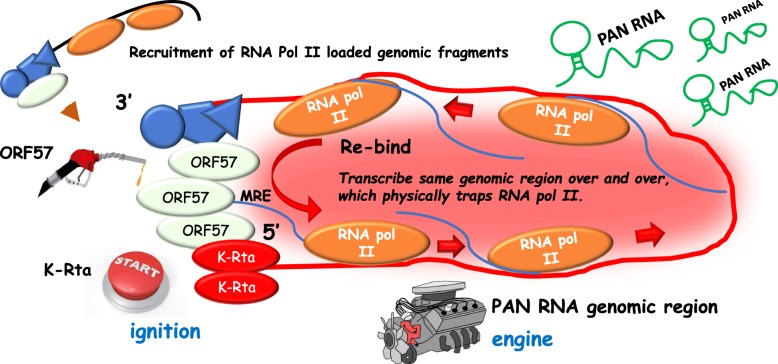Fig. 4.
Model: Keeping resources for viral transcription in proximity by physically “trapping” RNA Polymerase II complex for effective viral gene expression. Nuclear PAN RNA as exhaust from the KSHV viral engine. Nascent PAN RNA accumulation is depicted as blue lines with RBPs (blue shapes) and ORF57 (light green ovals) bound. ORF57 binds to PAN RNA at multiple sites [106] including the Mta response element (MRE). The viral lytic engine starter motor is the viral transactivator K-Rta (red ovals), with the KSHV early gene product ORF57 serving as the fuel to drive the RNA Pol II rotor situated within the PAN RNA locus engine (red line). ORF57 is also a direct target of K-Rta and its lytic expression lags slightly behind that of K-Rta (not shown). Interactions between K-Rta, ORF57, RNA Pol II and nascent PAN RNA serve to keep RNA Pol II and associated transcriptional machinery trapped at the PAN promoter to facilitate high levels of PAN RNA. Excess PAN RNA production (green) accumulates as a by-product of running the high-powered viral engine. Running of the engine acts in cis drives expression of viral lytic genes along the entire KSHV episome. Hub formation via recruitment of additional RNA Pol II loaded genomic fragments (black line, upper left) is shown

